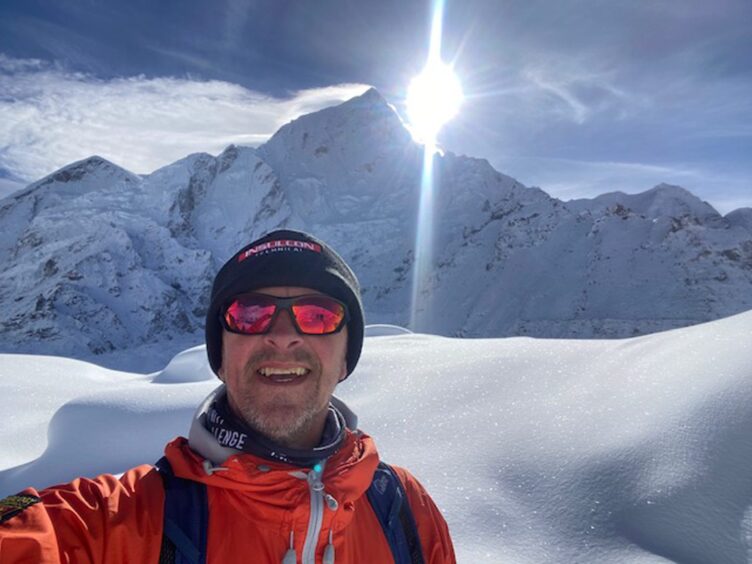
After enduring freak weather in Nepal this year that prevented him from getting to Everest base camp, energy industry worker Alan Shand looks to use his offshore rope access training to scale a peak next year.
The business development and account manager for Insulcon Technical attempted to make it to the base camp of the world’s tallest mountain this year, however, severe weather prevented him from accomplishing his goal.
He now aims to surpass base camp and summit Island Peak in November 2025, a task that will require him to put a history of rope access training to the test while also managing his autoimmune condition, type 1 diabetes.
Last month Nepal was hit with monsoon rainfall which caused landslides and flooding across the country when Shand was attempting to make it to base camp.
It has been reported that 217 people died as a result of the weather.
Speaking of the challenges faced on his trek, Shand said: “When we got to the last habitable town before you get to base camp, it’s a place called Gorakshep and it’s only three kilometers from base camp, the snow had started to fall.
“The forecasts had been saying it looked like it was going to be snowing over the next day to two days but nobody was expecting as much snow to fall. I think, over the next two days, there was about 5-foot snow that fell on the route to base camp.”
Shand’s party was unable to move any closer to their planned destination of base camp due to the weather, however, they did make it to Sir Edmund Hillary’s camp that he used in his 1953 expedition.
The people most shocked by the weather were the guides that support those heading to base camp, Shand explained.
“The team lead guide, he’s now done over 100 trips to the Everest base camp, he said that’s the first time in 22 years that he hasn’t reached base camp,” Shand added.
Not deterred by this years’ experience, Aberdeen-based Shand is set to return to the mountain range in Nepal and is planning on putting historic offshore training to good use.
He explained: “We’re not just doing base camp next year. We’re going to do a further three summits, the highest one of those being a mountain called Island Peak.
“It’s 6189 metres above sea level. It’s mainly a tracking mountain but for the top section you’re harnessed and roped, so it’s a wee bit technical.”
Shand has worked in the oil and gas industry since 1983 and in that time he has picked up skills that could prove useful in next year’s ascent.
He used to work for Rig Blast, now Stork, in the rope access division, under a boss who has since scaled Everest
“I went through my rope access level 1 back in the 90s,” he said.
“So, for this trip next year I will be familiar with some of the techniques and some of the equipment that we’ll be using, although we’ll be going through further training in the fall prior to going up that mountain.”
A ‘butt on the bum’ from a yak
But the snow and monsoon weren’t the only challenges Shand’s group faced. Setting off from Lukla airport, Shand and his party of would-be mountaineers loaded up a team of yaks with their provisions.
He said: “We had a guy with six yaks. The yak is like a cow and they use them for transporting equipment, so they had all of our bags.”
However, not all of Shand’s encounters with the workhorses of the Himalayas were as pleasant. He shared the story of coming across one of the animals that had a young calf in tow.
“During the descent, I actually got charged and attacked by a yak, believe it or not,” Shand recalled.
“Out of all these people, for some reason, it decided it would have a go with me.”
He added: “It actually lifted me up into the air but luckily it had deformed hor
ns because these things have got quite sharp horns.
“Its horns were rounded inwards which is probably just as well because the thing lifted me up in the air.”
The angry yak wasn’t part of Shand’s convoy but one of the many beasts the group passed on the way to camp.
“There’s donkeys, horses, these huge yaks and I’ll tell you what, their horns are like bulls horns. It’s quite a busy route so you’ve got to have your wits about you when these things are passing.”
Despite the “butt on the bum” he received, Shand was not hurt and the experience gave him and the rest of his party something to laugh about later that day.
“It certainly added hilarity to lunch that day because everyone was talking about it,” he said.
Diabetes management on the world’s tallest mountain
As a type 1 diabetic, Shand had to manage his blood-glucose levels while in one of the most extreme climates on the planet.
He had been warned by the NHS before leaving that the altitude and weather may impact the equipment he uses day to day to manage his condition.
He was advised to take an “old fashioned” blood glucose testing kit as his more advanced monitor was unlikely to work in the harsher environment.
However, this was not an issue, and his more advanced sensor worked throughout the trip despite him packing the backups.
The issue Shand did run into was managing his insulin intake as his medication worked slower than he was used to, resulting in times when his blood sugar levels were higher than normal.
Type 1 diabetics regulate their blood sugar levels by injecting insulin, when the levels of glucose drop to lower than normal this is called hypoglycemia, or ‘a hypo’.
He explained: “I was finding was the insulin was very, very slow at working and it was sometimes up to an hour and a half to two hours before it started taking effect.”
Shand said that for the two-week period of trekking across the mountain ranges of Nepal, he’d “rather be high than taking hypos.”

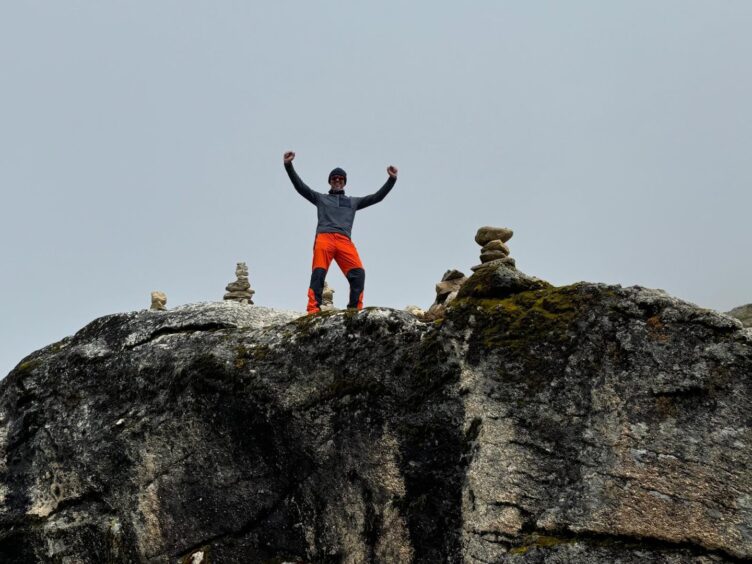 © Supplied by Alan Shand
© Supplied by Alan Shand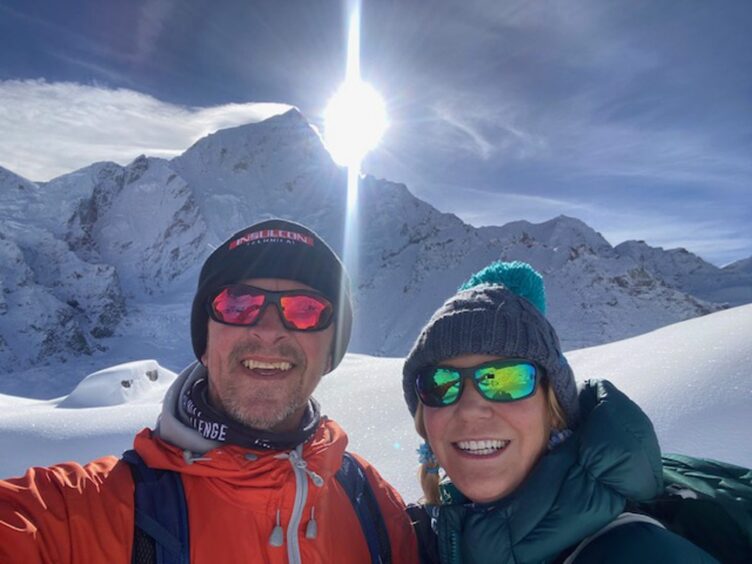 © Supplied by Alan Shand
© Supplied by Alan Shand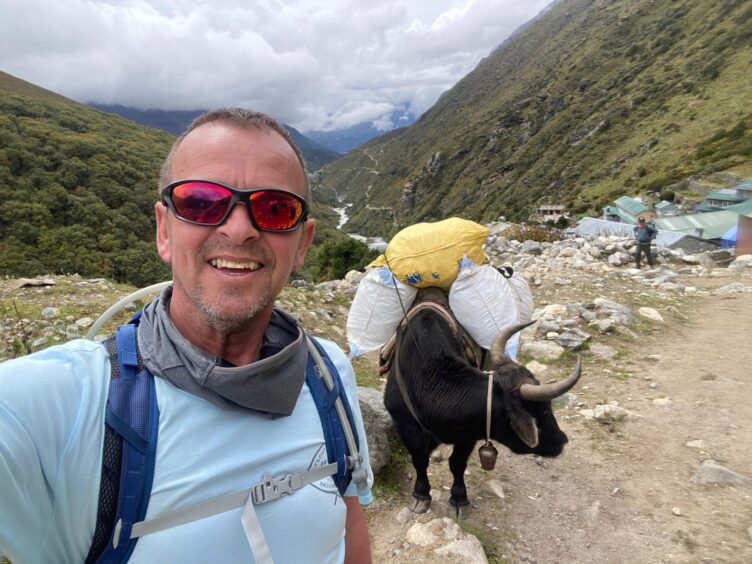 © Supplied by Alan Shand
© Supplied by Alan Shand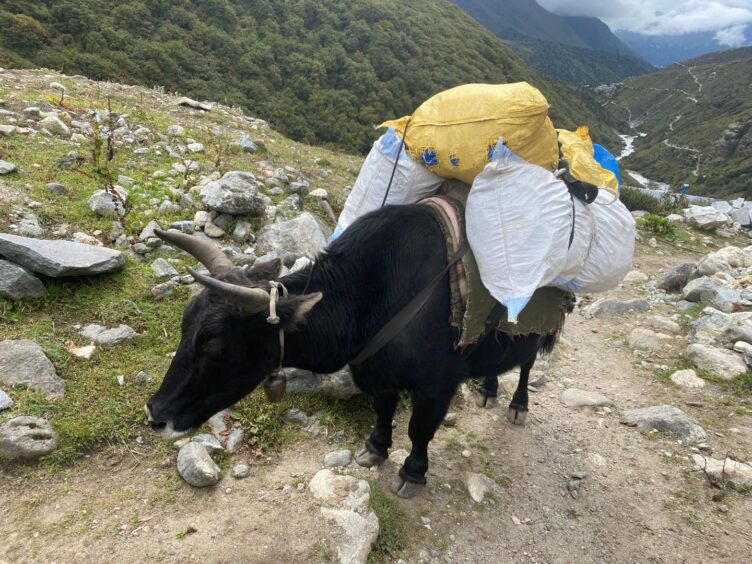 © Supplied by Alan Shand
© Supplied by Alan Shand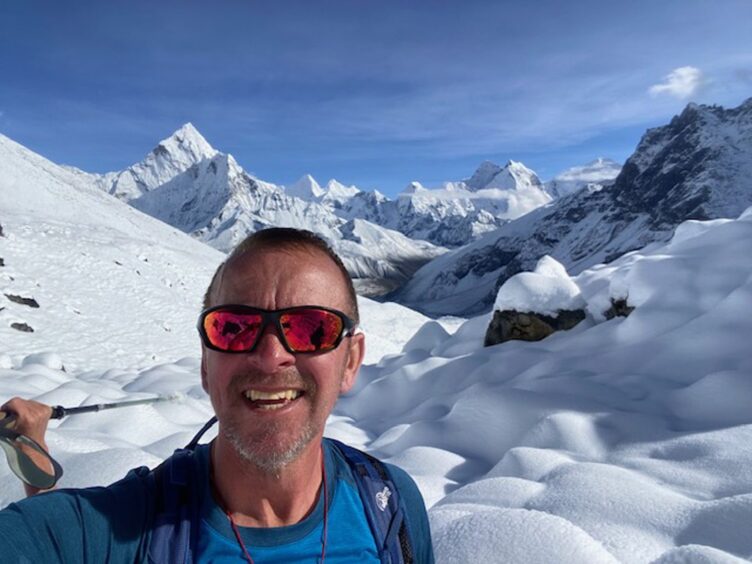 © Supplied by Alan Shand
© Supplied by Alan Shand